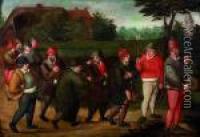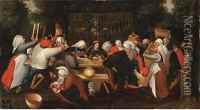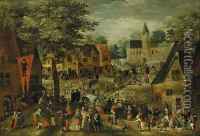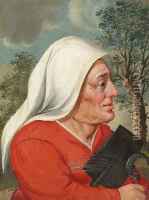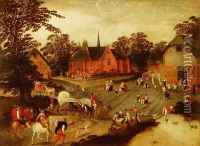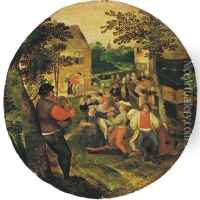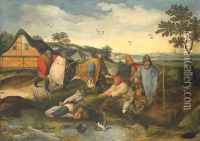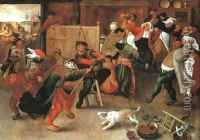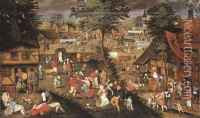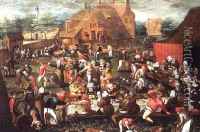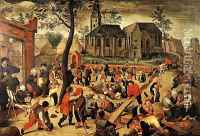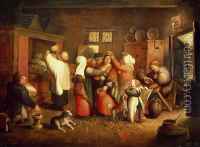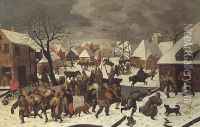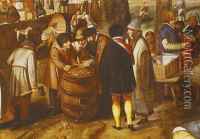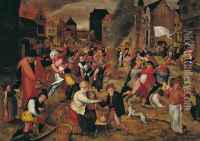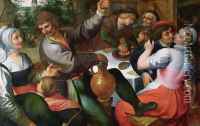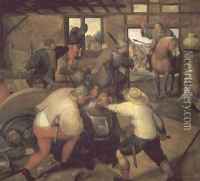Marten Van Cleve Paintings
Marten van Cleve was a Flemish painter born in Antwerp in 1527. He is primarily known for his lively genre scenes, although he also painted landscapes and religious subjects. Van Cleve came from a family of artists; his brother Hendrick and his sons were also painters. He was a pupil of Joos van Cleve, who was likely a relative, and was influenced by Pieter Bruegel the Elder. Van Cleve became a master in the Antwerp Guild of Saint Luke in 1551 and was active in the city's vibrant artistic community.
Van Cleve's work often depicted peasants and their daily life, with a focus on festivals, dances, and other aspects of the rural lifestyle in the 16th century. His paintings are characterized by their detailed figures and a sense of humor, often including comic or moralizing elements. Despite his focus on the lives of common people, he also created altarpieces and religious works for local churches, demonstrating his versatility as an artist.
Throughout his career, Marten van Cleve enjoyed considerable success and his paintings were sought after by local patrons as well as collectors from abroad. His style had a significant impact on Flemish genre painting and his works are considered important for their depiction of 16th-century peasant life. He remained productive until his death in Antwerp in 1581. Today, Marten van Cleve's paintings can be found in various museums and collections around the world, offering a window into the world of the Flemish Renaissance.

